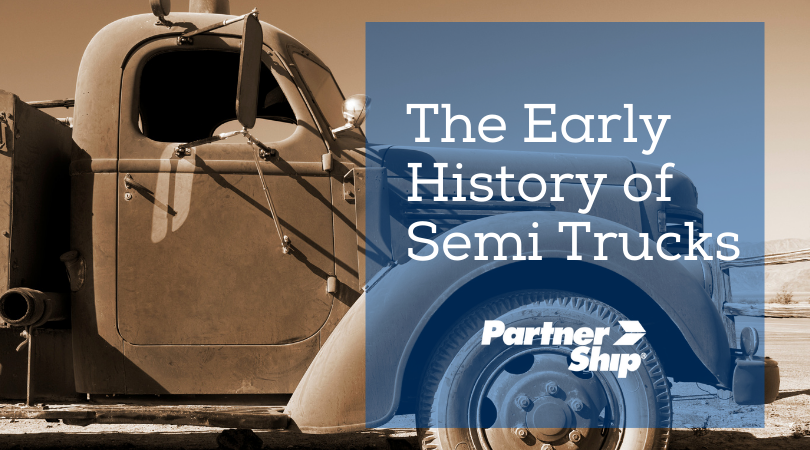
We see hundreds of trucks on the road every single day.
They not only help us live our modern life, but have contributed to the economic
prosperity of the country, so we wanted to take a short look back at the very
important history of trucks.
People have used truck-like vehicles to transport goods and
move materials for centuries, but before the invention of the mechanical engine,
they were often drawn by pack animals. In fact, the definition of the
word “truck” has evolved from “a cart for carrying heavy loads” to the more modern
“motor vehicle for carrying heavy loads.”
Before motor trucks, most goods were transported by railroads,
with local transportation needs met by “trucks” drawn by pack animals, which
had no rival until self-propelled steam-powered vehicles began emerging in the
late eighteenth century. The motor truck concept languished until the invention
of the internal combustion engine in the middle of the nineteenth century
boosted its potential.
Cleveland horseless carriage maker Alexander Winton is
widely credited with inventing the semi-truck in 1898, and sold his first
manufactured semi-truck in 1899. When Winton sold its first cars in 1898, it
created the need for the cars to be delivered to their buyers, which led to the
concept of the semi-truck to deliver his manufactured vehicles.
In 1904, only about 700 large trucks rumbled on the roads
in the United States but that number skyrocketed to nearly 25,000 in 1914.
Motor trucks at the time were not built for comfort but for utility. They rode
on solid rubber wheels with mechanical brake systems, and could only travel
short distances at low speeds, often over rough and bumpy unpaved roads. The
invention of pneumatic tires and hydraulic brakes helped make early trucks a
more useful vehicle.
The semi-truck population exploded in 1917 thanks to improved
roads and the Federal Highway Act, which created a 3.2-million-mile national
road system. In 1924, the number of trucks on the road would be 416,569; a
1,560% increase from just ten years earlier.
The 1940s and 1950s saw the rise of the automobile and America’s
population shift from the city to the suburb. The “Federal-Aid Highway Act” of
1956 authorized the construction of a 41,000-mile network of interstate
highways. These two changes cemented the semi-truck as a part of daily life
because more goods had to be shipped longer distances, which was made easy by
the new system of interstate highways.
Some key dates in the evolution of the semi-truck:
1898 - Alexander Winton invents the semi-truck
1914 - A semi-trailer used to transport boats created;
used for other cargo as well
1916 – Mack introduces the AC, signaling the end of open
cab trucks
1934 - Navistar builds the first tandem axle, six-wheel
truck
1942 - Freightliner introduces the first all-aluminum cab
1953 - Freightliner creates the first overhead sleeper
cab
1959 – The first cab-over-engine truck is introduced
As the truck has evolved, so has its engine. The first
trucks (carts, really) were powered by horses or human. Then came steam-powered
trucks. Electric trucks were popular in the late-19th and early 20th century,
until the internal combustion engine and cheap gasoline led to a decline in
their use. Direct-injection turbo-charged diesel engines became standard during
the 1950s as trucks began the conversion from standard gasoline engines.
What will the semi-truck of the future be like? Check out
this post!
PartnerShip is proud to be based in the birthplace of the
semi-truck, Cleveland, OH! Next time you need a semi-truck to move your
finished goods or inbound raw materials, give us a call at 800-599-2902 or
request a quote. The freight shipping experts at PartnerShip are here to lend a
helping hand!